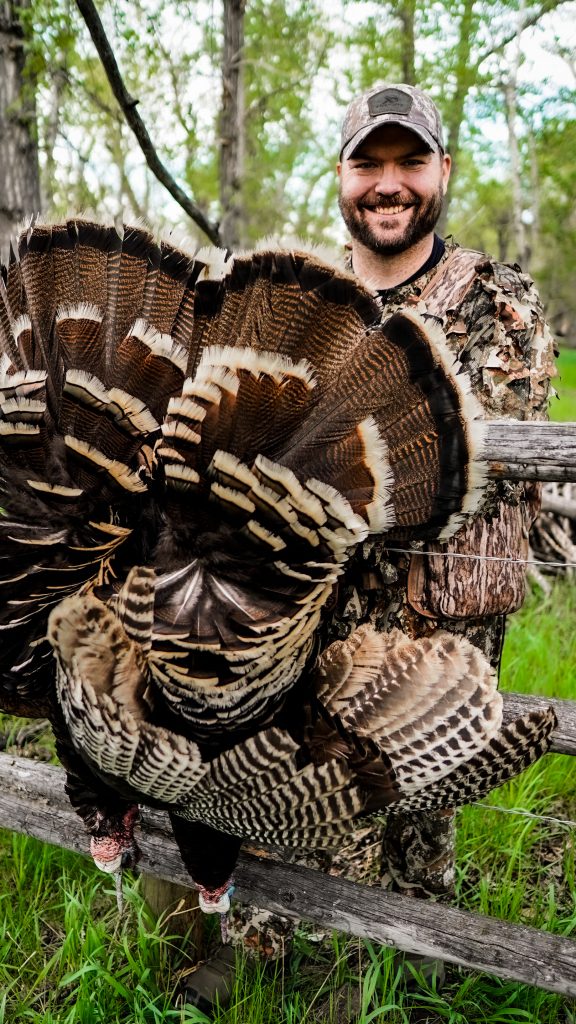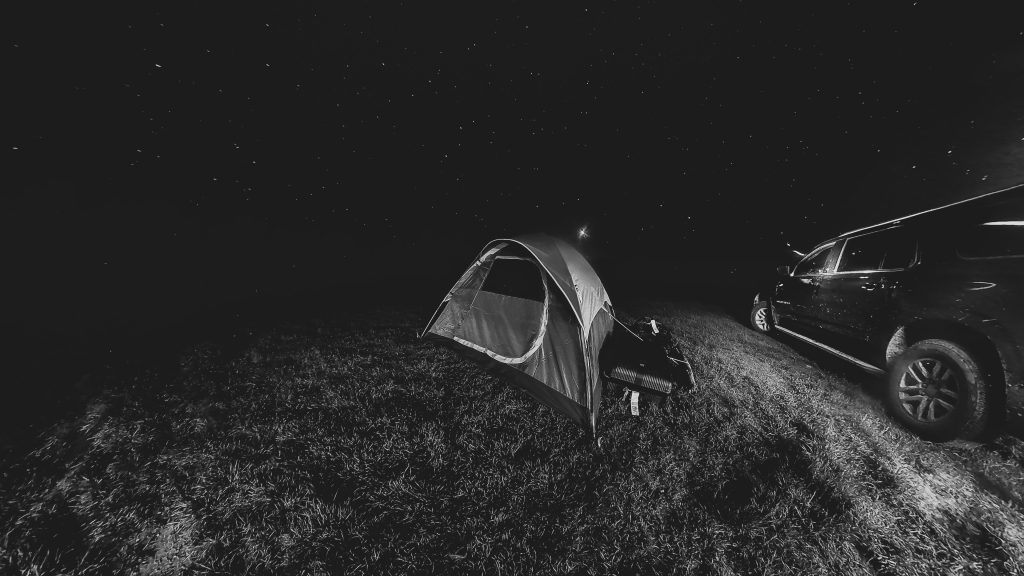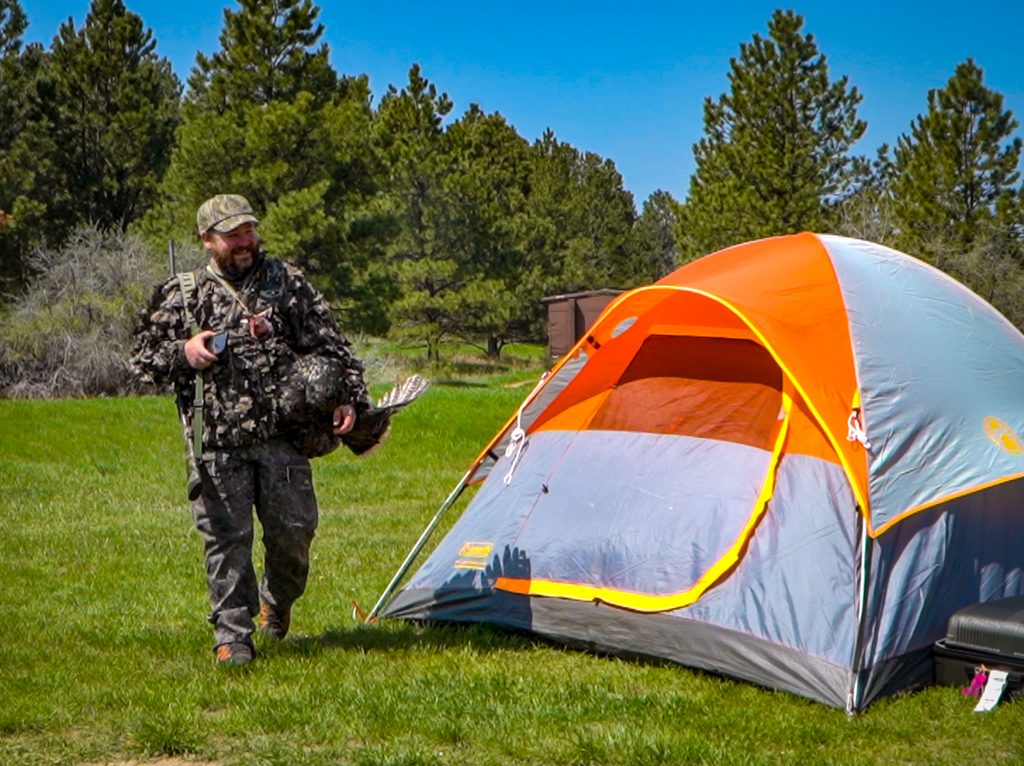Plan Your Turkey Trip Now
Don’t wait. Do it today. Here are all the tips you’ll need to do it right.

For several years, my best friend Jacob Bliss and I have taken off at least one week in the spring to chase turkeys. At first, we stayed in our home state, but we eventually were inspired, like so many others these days, to travel to places we had never visited.
It was intimidating at first. Where do we go? How do we get there? What do we need to take? How do we get a turkey back home if, Lord willing, we get to tote one back to the truck? Can we even afford this trip?
All valid questions. The questions I asked myself before that first trip would have given me carpel tunnel if I typed them all out. We eventually got more efficient with the logistics involved in such a trip. My work travel helped groom me for life on the road. I was able to build from that and apply it to hunting trips.
Granted, I spend less than 40 days in the woods every spring. Heck, I’m lucky to spend 20-30 days out there. I’ve got a Monday through Friday job, two kids under 4, and limited paid time off. Being gone for over a week or so isn’t in the cards right now.
Where do I go?
Pick a state. You’ve got 49 choices.
Sticking to a particular subspecies will narrow down that choice considerably. There may be a part of the country you’ve always wanted to visit. So long as it’s not Alaska, they’ve got turkeys. If you need help deciding between two states, it might be time to start your homework. It’s never too early to start planning a trip.
A few phone calls to the regional game and fish offices and biologists will determine if there’s a good population in that state or region. The numbers are easy to find online; those people have lots of info, and most are happy to share it with an out-of-stater. Ask about hatches from two years ago. For instance, I inquired about the 2021 hatch success for a 2023 trip. Most of us are targeting 2-year-old gobblers instead of jakes. The hatch a couple of years prior should give you an idea of the number of gobbling birds available.
Also, find out about hunting pressure, success rate, recent or upcoming habitat projects, springtime weather, turkey food sources, and anything else that crosses your mind. I can build some rapport with a couple of the biologists throughout the winter. I’ll make at least one phone call to each of my contacts monthly for updated info or something I remember I should have asked previously.
This rapport has paid off because I’ve gotten some inside scoop on new public areas opening that spring and have never seen hunters. I didn’t have access to these areas before anyone else, but I had time to gather information about them and start the trip there. Staying in contact will also give you a heads-up on fresh burns.
How do I get there?
You’ve decided on a state and narrowed it down to a region of a state. Your transportation options are driving or flying. Here’s how I decide.
I’ll usually fly if driving somewhere takes me more than a day. In that case, flying saves you TWO days that you can hunt. Calculate what it would cost to drive versus fly, too. You might be surprised how affordable it can be to fly and just split a rental vehicle with a buddy.
Here are some scenarios for getting to Merriam’s country in Montana from Tennessee:
It’s about 1,700 miles and 26 hours of driving. There are two travelers. You leave on a Saturday and come back the following Saturday. The average fuel price is $3.56/gallon, and your truck gets 17 mpg. Furthermore, if you’re like me, you cherish sleep because you have two kids, and can’t pull those all-night drives, so get a hotel out there and back. However, you bring a tent and sleep gear, so there is no cost for lodging during the week. Your total per person is $540. That cost for four days of hunting is $135/day.

Driving
Fuel/Person $400
Hotel/Person $140
Total/Person $540
Travel Days 4
Hunting Days 4
$/Hunt Day $135
Here’s one flying from Nashville to Bozeman. Flights per person are $444. You take off from Nashville early Saturday morning and land in Bozeman that afternoon. You rent a standard SUV for $600 and split that cost between you.
Your total per person is $744. That cost for six days of hunting is $124/day. It costs more to get out there, but you gain two days of hunting.
Flying
Flight/Person $444
Rental Car/Person $300
Total/Person $744
Travel Days 2
Hunting Days 6
$/Hunt Day $124
We have Southwest credit cards that we pay off every month. My wife and I put everything on ours and treat it like a debit card, so we only spend what we have ready to pay it off. With everyday purchases, my wife’s Amazon purchases (y’all, it’s like Christmas at our house every day…), and the promotions from Southwest throughout the year for more points per dollar spent, it’s effortless to get enough points saved for a round trip flight. If you have a small business, then it’s even easier to accrue points. I’ve got a good friend, a farmer, who uses his Southwest card for feed, fertilizer and equipment. He hasn’t paid for a flight for his family in over a decade. That same round-trip flight to Bozeman is 30,156 points. If you both have enough points, your total per person is just $300 for the rental car. Now your cost for six hunting days drops to $50/day.
If you don’t have enough points for a full round-trip flight, you can book two one-way flights and use points on just one. You total $522 for six hunting days at $87/day.
An extra couple of days of hunting is well worth the costs of flying to me. If we’ve got one week to travel and hunt, we’re going to make the most of it.

What to take?
The good thing about driving to your destination is that you can take your vehicle and load it up with everything you want and need. There are a couple of constants between driving and flying, however.
Sleep gear is needed to prevent paying for lodging. You can camp for free on any national forest or U.S. Bureau of Land Management land. Many Wildlife Management Areas and other state lands also provide free tent camping. State parks are usually cheap and have bathrooms and showers. There are many options for tent campers.
You might invest in a quality, lightweight tent (or just a hammock if weather permits) for flying. These tents are compactable and light enough to carry in a backpack. These features make them perfect for flying, where your goal for checked baggage is 50 pounds or less per bag. Backpacking sleeping bags and pads are also ideal for the same reasons. Two people can easily put a tent, sleeping bags and sleeping pads in a large duffle bag. You could also throw in a few dehydrated meals and a backcountry stove, but you can’t fly with the fuel tank even in checked baggage. That’s something you’ll need to get upon arrival and leave there.
You could both pack your vests in that same duffle with camp gear. Situate them in the bag so that your seat cushion acts as a barrier between the outside of the bag and the contents of the vests. Checked baggage is like hay bales tossed in and out of the carts. Knives and other blades can stay in your vest in checked baggage.
A quality cooler is essential whether you’re flying or driving. If driving, you can have as big a cooler as you like. If flying, consider weight restrictions. I also recommend a cooler with wheels if you need a chest cooler. Wheeling it to and from the car is much easier, especially if loaded with turkey meat. You could often use a soft-sided cooler since turkeys only occupy a little space after dressing.
Furthermore, the fans, spurs, and beards store easily in there. Should you want a whole bird mounted, several videos on the internet show how to cape one out so you don’t have to bring the bird back whole. It’s easier than you think, so don’t be intimidated.
Some airlines allow two bags under 50 pounds checked for free. So, for two people, you can check a gun case, a duffle with camp gear and vests, a chest or soft cooler, and another large bag for free. You’re both allowed a carry-on and personal item (backpack). It’s surprising how much stuff two people can take when flying.
Conclusion
Traveling to hunt has resulted in some of my best memories and experiences. I love the detective work of finding turkeys from hundreds, if not thousands, of miles away. Planning the logistics of how to get there. Finalizing your gear. Having plans A through Y fail and plan Z makes it all worth the time and effort. The people you meet — the scenery.
The turkeys are the main reason for going, but much of the enjoyment occurs out of the woods.
“Someday” isn’t on the calendar. And “someday” you’ll wish you had taken those trips. Because “someday” they’ll put you in the ground to rest forever.
Make those memories today, not “someday.”
Flying with Hunting Firearms
Many people think flying with guns is a huge hassle. It’s not. Invest in a quality hard case big enough for two guns and one that has wheels. Everything should have wheels when flying. When I pack my gun, I open the bolt and attach a cable lock through the receiver. Airlines require that your ammo is in a factory box. For guys that roll your shells, find a factory box that fits. You can store it in the gun case.
Show up to the airport plenty early to check guns and luggage. You’ll tell the person behind the counter that you have a firearm(s) to declare, and they’ll ask you to place it on the scale and open it up. Your hard case should have spots for small padlocks. Check with the airline to see whether you need TSA-approved locks or not. They’ll glance at the guns and fill out a small slip for you to sign and place in the case. They’ll take it in the back and may ask you to wait on the side for a few minutes while they process and scan it. They’ll let you know when you can leave. You’ll pick up your case at the oversized baggage bay near your baggage claim carousel.
